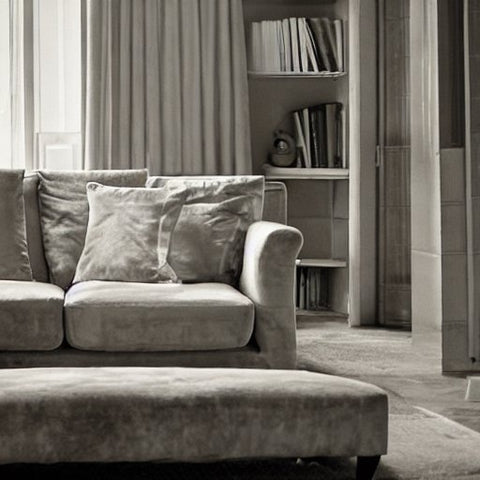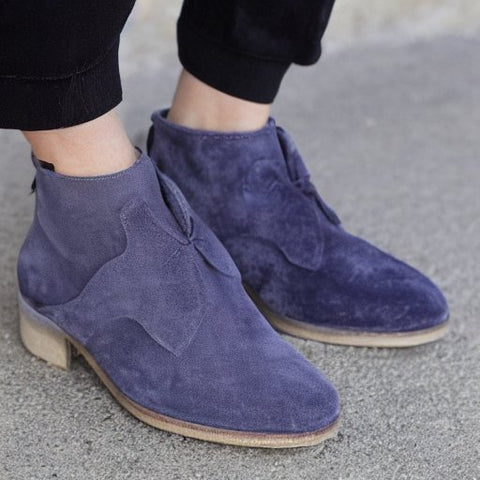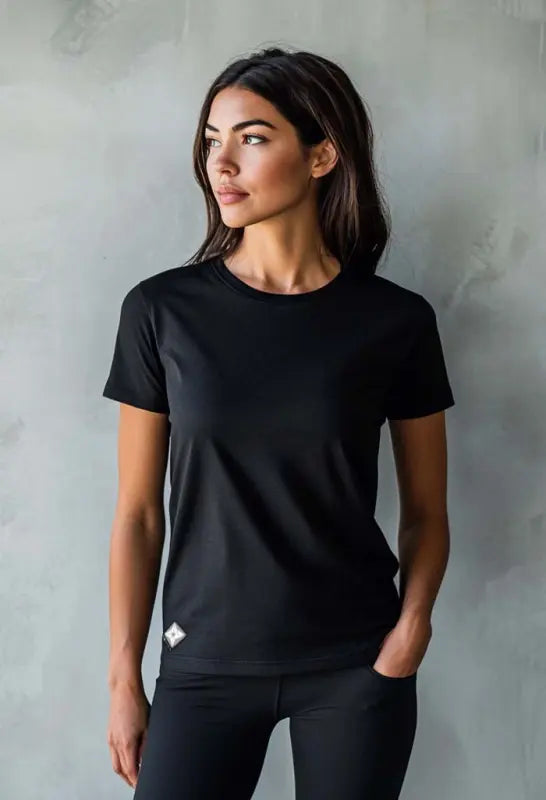Where Can I Find Suede?
Suede is a kind of soft leather that is produced by tanning the reverse side, or bottom, of an animal skin. It is not as long-lasting as regular leather, but it is more pleasant to wear since it is more malleable.
The quality of the animal hide used, the age of the hide, and the tanning technique are the three primary criteria that define the quality of suede. The suede obtained from lamb sheep is of the highest quality, but the suede obtained from older cows is less desired.
Suede is used for the following:
- Clothing: Suede is frequently utilized in the production of a variety of garments, including but not limited to trousers, coats, and dresses. Because of its supple and opulent feel, which is pleasant to have against the flesh, it is a material that is frequently used for creating clothes.
- Shoes: Suede is frequently used in the production of footwear as well, and can be found in styles such as slippers, boots, and sneakers. Because it is both sturdy and fashionable, it is a material that is frequently used for making boots.
- Accessories: Handbags, wallets, and caps are just a few of the many different types of items that can be crafted out of suede. Suede imparts a sense of opulence to these objects, just as it does to apparel and footwear.
- Upholstery: Suede can also be used for furniture, such as on sofas, chairs, and even vehicle seats. Suede is commonly used in these applications. Because it is both resilient and plush, selecting it as a material for furnishings can result in a setting that is simultaneously cozy and chic.
- Gloves: Suede is another common material for gloves because it offers a good traction and can be tailored to suit snugly without being too loose.
Where can I get suede?
Suede is a form of leather that is created by using the reverse side of an animal skin during the tanning process. It is a supple and sumptuous fabric that may be utilized for a variety of purposes, including footwear, accessories, and clothing. Additionally, it is a highly sturdy and long-lasting substance that does not quickly wear out or deteriorate.
There are a great number of distinct types of suede leathers, and each kind of suede leather has its unique set of qualities. For example, suede made from sheepskin has a velvety feel and a smooth nap. Cowhide suede, on the other hand, is more robust than other varieties of suede, and its nap may have a more abrasive texture.
It is not unusual for those who advocate for the rights of animals to be worried about the exploitation of animals in the production of suede. This is because the production of suede leather requires the killing of animals and the removal of their skins.
On the other hand, the transformation of an animal skin into suede is really a quite straightforward procedure. To begin, the leather will be subjected to a variety of treatments and procedures that are designed to fortify it and make it more long-lasting. In most cases, this is accomplished by combining salts, oils, and many other naturally occurring compounds.

After that, the leather undergoes a distinct texturing procedure that will provide it with the napped external texture that contributes to its high level of desirability. The completed leather product is created by cutting and stitching together the suede once it has been assembled.
Suede is a very desired option for outerwear, in addition to being a well-liked material for apparel and accessories. Fashion designers like to love it due to the fact that it has a smooth finish and a delicate drape.
Suede may be found in a wide variety of colors and patterns, and it can be used in a variety of various contexts due to its adaptability. It is particularly popular for footwear because to the fact that it can be worn with a range of different outfits and provides the shoes with an appearance and feel that is entirely their own.
Origins
Suede is a specific kind of leather that is crafted from the skins of various animals. In order to maintain the quality of the hide and make it more pliable, the material may be tanned in a number of different methods. The leather is then split down the middle and scraped so that only the napped underside of the skin is exposed. This results in a fabric that has a smooth exterior and a pliable consistency.
During the Paleolithic period, people fashioned their clothes and other household goods out of the skins of various animals. However, mass production of leather didn't begin until the Industrial Revolution, when new tanning chemicals were found. Prior to that time, leather was only made in small amounts.
Since that time, suede has evolved into a highly sought after and widely used material in the fashion industry. Because of its opulent look and feel, it is most often used in the production of outerwear like as coats, boots, and jackets. Because of its one of a kind feel, it is very often used in the production of bags and shoes.
Because it results in a finish of such high quality, it is also often used for reasons related to home decor and furniture. It is versatile enough to be used as a cover for rugs and carpets in addition to various kinds of upholstery.
The term "suede" comes from the French phrase "gants de suède," which literally translates to "gloves of Sweden." The word "suede" is of French origin. This is a reference to the smooth and velvety gloves that were manufactured in Sweden and exported to other countries because of their high quality.
These days, suede may be crafted from the skins of a broad variety of animals. Lambskin, goatskin, pigskin, calfskin, and even deerskin are used to manufacture suede. Calves are often employed in the manufacturing of cowhide suede due to the fact that the hides produced by calves are softer and lighter than those produced by older cows.
In addition to suede, another kind of leather known as nubuck is available. Nubuck is created when the grain side of the skin is sanded roughly, resulting in a velvety sheen on the surface of the skin. In addition, eco-suede is a vegan and ecologically friendly alternative to traditional suede. Rather of using leather or other animal products, eco-suede is produced from recycled plastics.
Characteristics
"gants de suede" was the initial name that the French used to describe to suede as a form of leather. Suede is a type of leather (gloves from suede). Since the dawn of time, this supple and opulent fabric has been used into all manner of garments and accessories. Because of its suppleness, flexibility, and comfortable nature, it is often used in the production of trendy footwear like as loafers and brogues.
The sort of animal skin that is used to make suede is a significant factor in determining both its feel and its overall look. Lamb, goat, calf, deer, and pig skins may all be used in its production. Pig skins are also an option. It also relies on the procedure of tanning and whether or not the hide was split before it was tanned.
Suede is a kind of leather that is often described as being thin, supple, and flexible. It is derived from the corium, which is the lowest portion of a full-grain leather hide. The most popular way to make suede is to begin with a full-grain leather hide, cut it in half lengthwise, and then reverse it so that the corium is facing outward.
When this is accomplished, the suede that is produced is more substantial than the leather from which it was originally derived, yet being suppler and more adaptable. It is possible to treat it in a way that will make it more long-lasting and waterproof.
It is quite simple to scratch suede, but if you brush the surface in such a manner that the fibers seem smoother, you may make the scratching less noticeable. Suede is very easily scratched. Scratches on suede leather may also be concealed by a protective coating that is applied to the surface of the leather.
Because of this, suede is more resistant to scratches than the majority of other types of leather, but it is still susceptible to damage from normal use and wear. In any case, suede, if it is maintained correctly, has the potential to be very long-lasting and sturdy.
Suede is a very well-liked material for use in a wide variety of fashion accessories. This includes purses, backpacks, and belts. Because of its feel and its capacity to withstand wear and tear, it is also a highly fashionable option for outerwear such as coats and jackets. Suede has evolved into a defining material in the world of fashion, as seen by the fact that Prada, Coach, and Brioni all use it in the production of their goods.
Uses
Suede is a sort of leather that has a fuzzy, napped surface and is often used for a wide variety of products including coats, shoes, textiles, handbags, furniture, and more. It was a significant contributor to the development of the fashion industry in the early 20th century and is today seen as a status symbol.
Traditionally, suede is produced from animal skins such as lambskin, goatskin, calfskin, or pigskin. The characteristics of the suede, such as how soft and supple it is, might vary depending on the kind of animal hide used. Leather is often produced from older and thicker animal skins, which results in a softer leather.
In order to get the suede effect, several producers sand the surface of the leather as part of the manufacturing process. This results in a leather that has a raised, textured side that is fuzzy and soft, in contrast to the thick "flesh side" produced by the process.
There are several methods for producing suede as well. Splitting the top grain of the leather and exposing the napped, fuzzy underside of the leather is a method that is becoming more common.
The fact that this surface is far more prone to stains and soiling, in addition to having much less resistance to UV light, is the primary drawback of this surface. It's also possible that its water-resistant qualities may diminish over time.
Regular application of conditioner is recommended for suede since this will assist prevent the material from becoming faded. You can perform this at home, or the manufacturer could do it for you.
In addition to reducing damage, it also helps to enhance the leather's durability. Additionally, it may cause it to feel more elastic and flexible, and it may also increase its resistance to scratching.
One other benefit of suede is that, in comparison to nubuck, it is often a more affordable and lightweight material. However, suede is not necessarily waterproof; when worn outside or exposed to rain, it may develop water spots and stains. These marks may be difficult to remove. One of the best ways to preserve suede is to keep it stored in a dry and cold environment.
Care
Suede is one of the most fragile types of leather, and in order to prevent any lasting damage from occurring, it is imperative that sufficient care be taken of it. Because of this, it is essential to brush and clean suede on a regular basis in order to maintain the quality of suede items and keep them in excellent shape, even after many years of use.
When the weather is poor, it is especially necessary to take care of your suede shoes, clothes, and accessories in order to avoid the suede from being ruined by water. This is the same advice that applies to any other sort of fabric. If the weather prediction calls for rain or a muddy stroll, you should leave your shoes at home and pre-treat them with a water-repellent spray such as Apple Brand Garde Rain & Stain Repellant before you wear them for the first time.

In the event that the suede becomes wet, remove any excess moisture with a towel or cloth made of microfibre and then brush it in both directions with a bristle brush. You should also use a suede cleaner to brush over any ingrained stains, like as stains caused by dirt or mud.
You may also preserve your suede against stains by dusting it with talcum powder or corn starch and let it to settle for the night. This works best when done the day before. After that, when it is completely dried, brush the area with a brush that has soft bristles to remove any remaining powder.
You may use either talcum powder or corn starch to assist absorb any moisture that may have gotten onto the suede, which will then result in the suede having a surface that is soft and napped. If you find that you have any stains on suede leather that cannot be removed by brushing, it is best to seek the assistance of a professional, as this will give the suede leather the best chance of being cleaned and restored. If you find that you have any stains on suede leather that can be removed by brushing, it is best to seek the assistance of a
Taking care of your suede goods will help ensure that they're not only comfortable but also attractive, and are sure to add a touch of style to your wardrobe. If you follow these guidelines, you should be able to continue to enjoy your suede items for many years to come.


















































Leave a comment